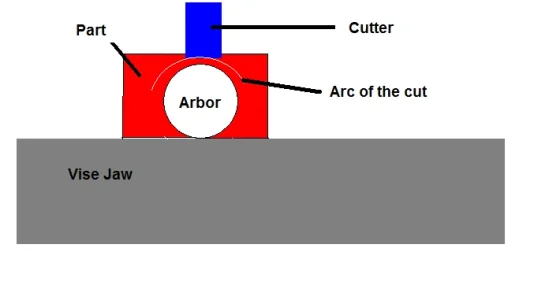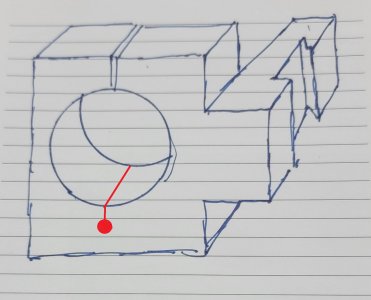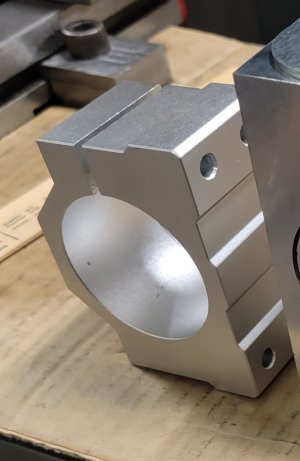Here's a trick. locate or make an arbor that is the same diameter as your hole (or close, it doesn't have to be perfect)
Clamp the workpiece in the vice with the arbor resting on top of the jaws. You can take successive cuts, making a concentric arc made of short lines that way - the result if very nice, and no thought or extra work to follow the inside circle...
Sorry @Dabbler , it isn't obvious to me what you mean. I did think about using a small fly cutter with a longer than normal tool stick out. Is that sort of the idea?
I know the job is done, but if there is something to learn, I want to learn it.



